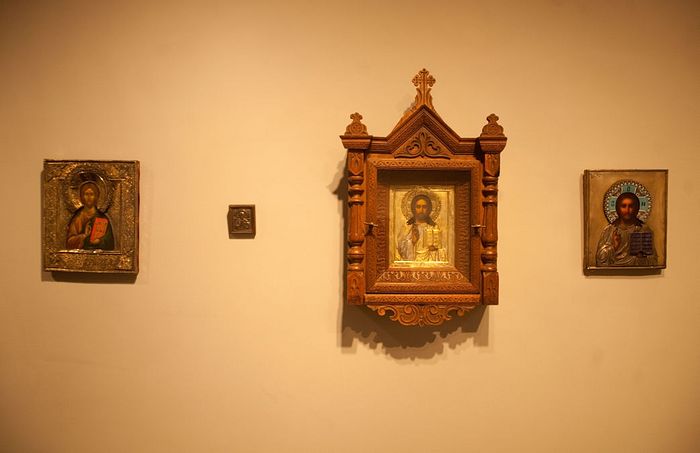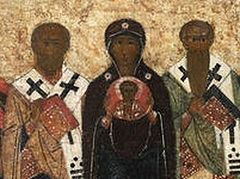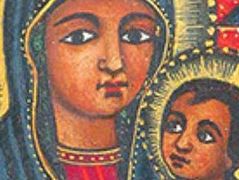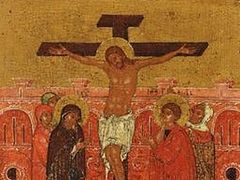Source: All Things Purdue
March 25, 2016
Anyone who has walked past the Robert L. Ringel Gallery in Stewart Center over the past few weeks has probably noticed the religious icons being displayed there, an appropriate exhibit for this month given that many of the images portray images related to Lent and Easter traditions.
The exhibit, “Divine Likeness: Interpreting Orthodox Icons,” was curated by Ashley Purpura, a visiting assistant professor of religious studies. Icons are images venerated in the Orthodox faith, typically depicting Jesus, Mary or the saints. The ones on display are all part of Purdue University Galleries’ permanent collection of Orthodox Christian icons, which were donated to Purdue by Katherine “Betsy” Scheuring in 2005.
“I had first seen the collection last year at some point. I went down to the gallery’s storage facility and asked to see it because it is part of Purdue’s permanent collection and my research focus is Eastern Orthodox history and thought,” said Purpura. “So I thought that I needed to do something with these icons because they were just in a big closet.”
The collection’s works range from the 17th to the 20th century and consist of Russian and Ethiopian icons. Purpura chose about 55 of these icons from the collection for her exhibit.
Purpura explained that Orthodox worship is very sensory-oriented – smelling incense, listening to music and chanting, touching and kissing relics, etc. In other words, one worships with their whole body. Purpura wished to convey this as much as possible in the exhibit.
“We wanted to contextualize the icons within the Eastern Orthodox community and liturgical practice, so what I provided on the text panels next to the groupings of icons were excerpts from hymns and homilies and prayers that would give a little bit of context to people viewing the image of Jesus or Mary or the Resurrection,” said Purpura. “I also asked that they play music – some traditional Orthodox chant – in the gallery.”
Although Western Christian churches will celebrate Easter this Sunday, the Orthodox Christian Easter (or Pascha) will not be celebrated this year until May 1. The exhibit contains many images related to Pascha, which is the center of the whole liturgical year in the Orthodox faith.
“The Saturday the week before Easter is called Lazarus Saturday and then comes Palm Sunday the next day, and so you see those icons first,” said Purpura. “Then there’s this whole week of services in the Orthodox Church and I just picked out a few icons. One is the Last Supper, which is traditionally celebrated on Thursday, and the Crucifixion, which is usually celebrated on Friday. Then there are icons with different feast days around the border and the Resurrection is in the center.”
The exhibit also features a little silver egg called a Resurrection Egg, which opens up and contains an icon of Jesus on the inside holding a banner of victory.
“Eggs are very popular in all Easter celebrations and the Orthodox have a tradition that all started with Mary Magdalene. In Orthodox faith, she is considered equal to the apostles,” said Purpura.
According to pious tradition, Mary Magdalene traveled to Rome to preach the gospel after seeing Jesus rise from the dead and ascend into heaven. She eventually had an audience with Emperor Tiberius because she wanted to tell him about the innocent man who had been put to death in Jerusalem. Everyone was supposed to bring a gift to the emperor and she brought an egg. When she walked in, she announced that “Christ is risen.” The astonished emperor asked how a man could rise from the dead. The egg then turned from white to red miraculously.
The exhibit offers an experience that can be enjoyed by anyone, regardless of their faith.
“The craft and workmanship of the paintings and metalworks is remarkable even to persons that are not of the Orthodox faith and we can enjoy them simply as fine art objects,” said Michal Hathaway, assistant director of Purdue University Galleries. “There are probably as many answers to the question, ‘What is art,’ as there are artists. Most mention that art is a response to the experience of life and that it can inspire or educate us. I think these icons achieve that if we look at them and wonder who created them and why.”
Those interested in viewing the exhibit can walk into the gallery in Stewart Center until it closes on April 23.




